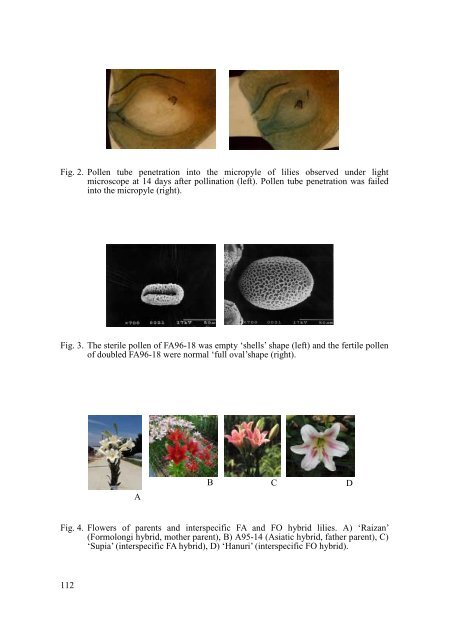Improvement of Breeding Efficiency for Interspecific Hybridization of ...
Improvement of Breeding Efficiency for Interspecific Hybridization of ...
Improvement of Breeding Efficiency for Interspecific Hybridization of ...
Create successful ePaper yourself
Turn your PDF publications into a flip-book with our unique Google optimized e-Paper software.
Fig. 2. Pollen tube penetration into the micropyle <strong>of</strong> lilies observed under light<br />
microscope at 14 days after pollination (left). Pollen tube penetration was failed<br />
into the micropyle (right).<br />
Fig. 3. The sterile pollen <strong>of</strong> FA96-18 was empty ‘shells’ shape (left) and the fertile pollen<br />
<strong>of</strong> doubled FA96-18 were normal ‘full oval’shape (right).<br />
A<br />
B C D<br />
Fig. 4. Flowers <strong>of</strong> parents and interspecific FA and FO hybrid lilies. A) ‘Raizan’<br />
(Formolongi hybrid, mother parent), B) A95-14 (Asiatic hybrid, father parent), C)<br />
‘Supia’ (interspecific FA hybrid), D) ‘Hanuri’ (interspecific FO hybrid).<br />
112














